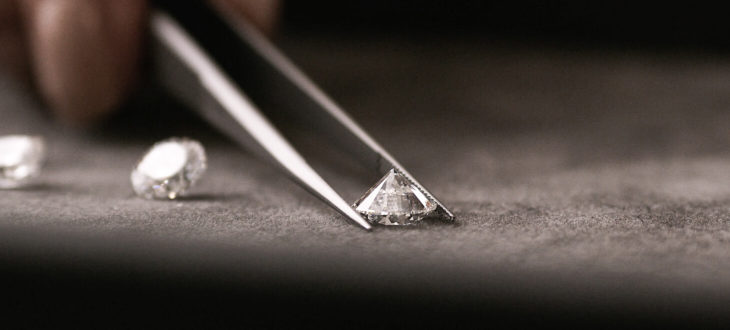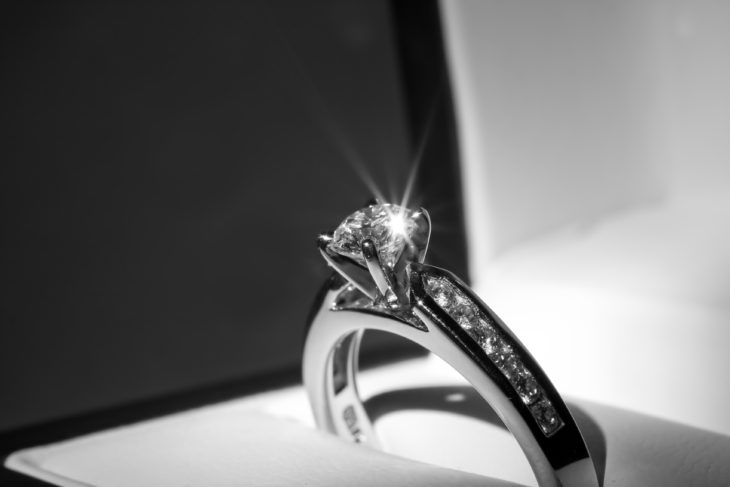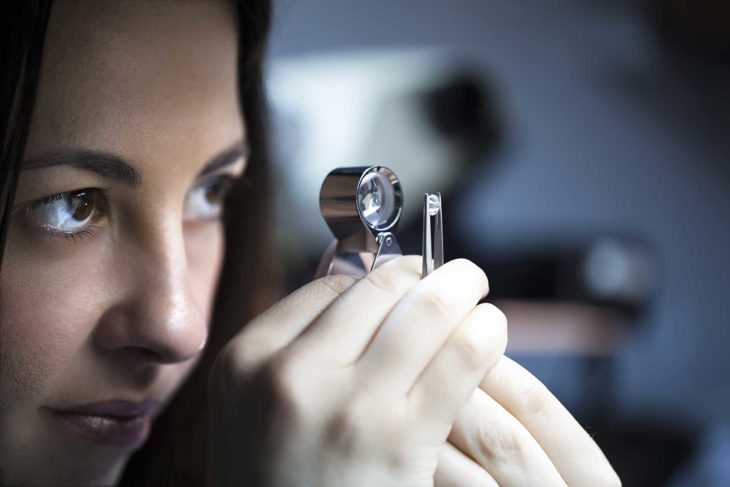Choosing a diamond for the first time can be incredibly overwhelming. You want to know that you’re choosing a stunning diamond that will last for a lifetime—especially since, for many people, that first diamond purchase is an all-important engagement ring. How do you know who to listen to? What certifications can you really trust?
Choosing Your Diamond

Source: Queensmith Master Jewellers
Choosing a diamond isn’t rocket science—and it doesn’t have to leave you feeling as though you’re never going to find the right one. Start with a look at the 4 C’s of diamonds: cut, clarity, carat weight, and color. Sometimes, you’ll have specific qualifications in mind. Other times, you’ll find that other factors influence your decision—including your budget. Before you start researching, develop a reasonable idea of what type of diamond you want based on these key factors.
Cut: The cut of the diamond determines its shape. It can influence the setting of the jewelry you choose or other stones that can go around the diamond. Common diamond cuts include:
- Round
- Oval
- Pear
- Heart
- Marquise
- Cushion
- Emerald
Clarity: It’s rare to find a perfectly clear diamond. Many of them have small flaws that can influence their appearance. In some cases, flaws can enhance the overall appearance of the diamond. In other cases, you may want your diamond to be as crystal-clear as possible.
Carat: The carat weight is the size of the diamond: how big is it? Obviously, the larger the diamond, the more you’re going to pay for it—which can make a big difference to a doting fiancé-to-be on a budget. A small diamond—and therefore a diamond with a lower carat weight—can make just as big a statement as a larger diamond. You should also consider elements like the way the piece will be worn and the taste of the recipient since they can have a big impact on the size of the diamond you choose.

Source: Patterson’s Diamond Centers
Color: When most people think of diamonds, they imagine an ice-clear stone with no color. Diamonds, however, can come in a wide range of colors that make it through the full-color spectrum: red, orange, yellow, green, blue, purple, and even black. Diamonds with true color are often rarer than traditional white diamonds, and you may face a price to match. The more vibrant the color of the diamond, the more rare and valuable it is.
GSI Certification: The Trusted Diamond Grading Laboratory
When you’re looking for trusted diamond certification, look no further than a GSI certified diamond. While many other labs supposedly have tighter grading factors, they also often lack the innovation GSI offers. This simple certification will provide you with valuable information about the diamond you’re considering, including certification of its carat weight, size, cut, and clarity—all of which can influence the diamond you choose as well as helping you insure your jewelry and providing vital evidence if the piece is lost or stolen.

Source: MultiVu
GSI is one of the most sought-after laboratories both in the US and abroad. More than 80% of big-box retailers use GSI grading certification. GSI, or Gemological Science International, is an independent commercial gem lab. It’s one of the biggest in the industry, combining state-of-the-art technology with training centers developed just to expand knowledge and expertise about diamonds. Not only that, GSI professionals combine decades of expertise in the diamond industry, which means that in many cases, they know diamonds like no one else. The company has facilities in the US, India, Israel, Belgium, and Botswana: a worldwide effort that allows both diamond connoisseurs and novices to find an ideal report about their diamonds.
If you’re looking for a diamond, many smaller retailers that can’t compete with the big box stores like Zales and Kay Jewelers may try to discredit GSI certification, insisting that there are better options out there. The truth, however, is that if you’re looking for more information about a diamond, GSI is a trusted source of information that can make it easier for you to choose the perfect stone for all your needs.
